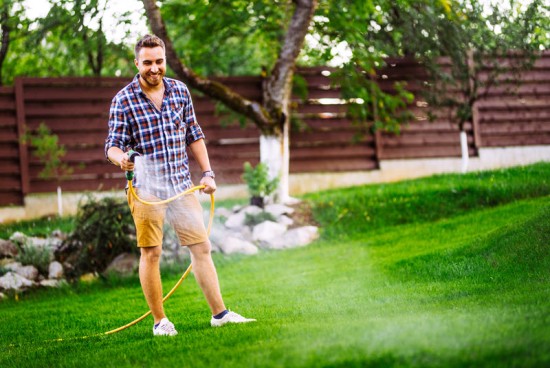|
Lawns can start looking rough after a while, especially if your family spends a lot of time outside. Thankfully, overseeding can help restore your lawn to its previous lush and green self.
Overseeding is a term for the process of applying a new layer of grass seed over the top of an existing lawn. The goal is to reinvigorate the lawn and help fill in bare or thin spots. Kids, pets, and weather can all be tough on a lawn and wear it down over time. Grass also simply gets old and not as healthy as it once was. Overseeding will help the grass thicken up, providing greater resistance against weeds and pests while improving your curb appeal at the same time.

When to Overseed a Lawn
The best time to overseed a lawn is in the fall. The soil is still warm but the air is cooler, which means the grass seed won’t have to contend with as many weeds, pests, or diseases. Depending on where you live, you may have to do it earlier in the season, before the snow and frost come in. If you miss overseeding in the fall, don’t worry–you don’t have to wait another year. Though fall is ideal, spring is also a great time to overseed and enjoy a full and healthy lawn by summer.
Overseed Your Lawn in 6 Easy Steps
Overseeding is a simple process that delivers results when done right. Best of all, it can be done in just six steps.
1. Mow the grass
Before overseeding, make sure you mow the lawn. Cut the blades a little shorter than usual as you will have to wait a while before mowing again, and bag the clippings as the new grass seed needs clear access to the soil.
2. Rake the lawn
Next, rake the lawn to loosen the soil and remove any grass, sticks, rocks, and other debris that could prevent the grass seed from making direct contact with the soil.
3. Amend the Soil
New grass seed needs good soil to grow in. Add a thin layer of new and enriched soil overtop of your lawn and gently rake it in.
4. Spread the seed
Now comes the fun part–get a seed spreader, fill it up with your chosen grass seed, and start spreading! A handheld spreader will work for smaller areas, but you’ll want a broadcast spreader for larger lawns or this process could take a while.
5. Add nutrients
Give your new grass the best chance of growing in healthy and strong by applying a lawn fertilizer overtop. Load the fertilizer into a fertilizer spreader and simply scatter it over the same places you just overseeded the lawn.
6. Water
Seeds need moisture to germinate, so water the lawn every day to help the grass establish itself. Water once or twice a day as needed to keep the soil consistently moist. Be careful not to overwater, as this can wash away the seeds. Refrain from mowing again until the new grass blades have reached the height of the old ones.
A healthy lawn will enhance your curb appeal and is more pleasant for kids and pets to play on. Keep your lawn looking great by overseeding when it starts to get a little worse for wear.
|